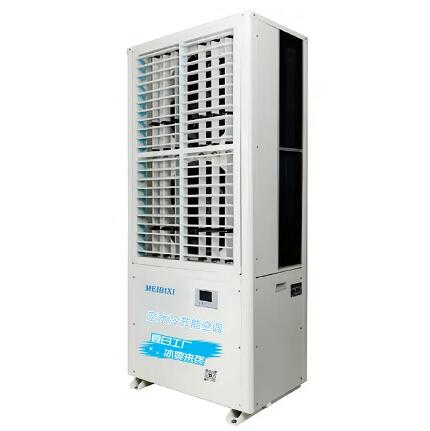The Future of Industrial and Commercial Central Air Conditioners: Efficiency, Sustainability, and Smart Technology
2024-08-30
As industries and commercial enterprises grow, so too does the demand for efficient and sustainable climate control solutions. Industrial and commercial central air conditioners are evolving rapidly, incorporating new technologies and design principles that prioritize energy efficiency, sustainability, and intelligent control. In this blog, we’ll explore the future trends shaping these systems and what they mean for businesses looking to stay ahead in the realm of climate control.
The Drive Towards Energy Efficiency
1. High-Efficiency Compressors and Motors: Modern industrial and commercial air conditioners are being equipped with high-efficiency compressors and motors, which significantly reduce energy consumption. Variable speed compressors, in particular, adjust the cooling output to match the load, minimizing energy waste during periods of lower demand.
2. Heat Recovery Systems: Heat recovery systems are becoming increasingly common in industrial HVAC systems. These systems capture waste heat from cooling processes and reuse it for other applications, such as heating water or providing additional climate control. This not only improves overall energy efficiency but also reduces operating costs.
3. Advanced Insulation and Sealing: To maximize the efficiency of air conditioning systems, advanced insulation and sealing techniques are being employed. This helps prevent the loss of conditioned air, ensuring that the system works more effectively and uses less energy.
Sustainability and Environmental Impact
1. Eco-Friendly Refrigerants: The shift towards environmentally friendly refrigerants is a significant trend in the HVAC industry. Traditional refrigerants, such as R-22, are being phased out due to their ozone-depleting properties and high global warming potential. Newer refrigerants, like R-410A and R-32, offer similar performance with a much lower environmental impact.
2. Green Building Standards: Many new industrial and commercial buildings are being designed to meet green building standards, such as LEED (Leadership in Energy and Environmental Design). Central air conditioning systems play a crucial role in achieving these standards, with features like energy-efficient operation, low-emission refrigerants, and sustainable materials.
3. Renewable Energy Integration: Integrating renewable energy sources, such as solar and wind power, with central air conditioning systems is another emerging trend. By powering HVAC systems with renewable energy, businesses can reduce their carbon footprint and contribute to a more sustainable future.
Smart Technology and Automation
1. Building Management Systems (BMS): The integration of central air conditioning systems with Building Management Systems (BMS) allows for centralized control and monitoring of the HVAC system. This smart technology enables facility managers to optimize energy use, track performance, and quickly address any issues that arise.
2. Internet of Things (IoT) Integration: IoT devices are transforming the way industrial and commercial HVAC systems operate. Sensors and connected devices provide real-time data on temperature, humidity, occupancy, and equipment status, allowing for more precise control and predictive maintenance.
3. AI and Machine Learning: Artificial intelligence (AI) and machine learning are beginning to play a role in the operation of central air conditioning systems. These technologies can analyze vast amounts of data to predict cooling demands, optimize energy use, and even detect potential failures before they occur, reducing downtime and maintenance costs.
The Role of Modular and Scalable Systems
1. Modularity for Flexibility: As businesses grow and change, their climate control needs can evolve. Modular central air conditioning systems offer the flexibility to add or remove components as needed, allowing the system to scale up or down without significant disruption.
2. Zone Control for Precision: Large buildings often have varying climate control needs across different areas. Zone control systems allow for precise regulation of temperature in different zones, ensuring comfort and efficiency throughout the facility.
Conclusion
The future of industrial and commercial central air conditioners is bright, with advancements in energy efficiency, sustainability, and smart technology leading the way. As these systems continue to evolve, they will offer even greater benefits to businesses, from reduced energy costs to enhanced operational efficiency. For companies looking to stay competitive in an increasingly eco-conscious and tech-driven world, investing in the latest HVAC innovations is not just a choice—it's a necessity.



